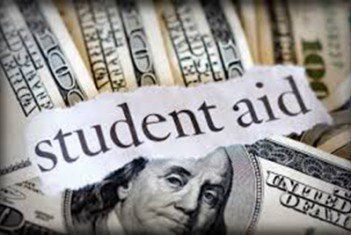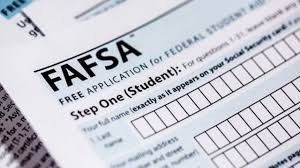Understanding Student Debt
websitebuilder • July 1, 2019

If you’re considering a student loan as part of your financial aid to pay for college, make sure you understand the basic principles of borrowing before you sign.
There are three components to all loans: The interest rate, the security component, and the term.
The interest rate is what the lender charges for the use of their money and is a small percentage of the amount loaned. There are two different types of interest rates: fixed or variable (adjustable). Fixed rates are unchanging. A fixed interest rate of 7 percent will be 7 percent for the life of the loan.
Variable rates change over time based on the movement of a standard market rate, such as the prime interest rate (which is the lowest rate of interest a bank can provide at a given time and place, offered to preferred borrowers). As an example, if you take out a loan with a variable rate at prime +2, it means that you’ll pay two percent more than the prime rate, regardless of what it is. Interest rates on the Stafford and Perkins Loans have low-interest rates. Plus, the government pays the interest on subsidized Stafford Loans (need-based) and Perkins Loans (also need-based) while you’re in school.
All loans are either secured or unsecured, which refers to whether you are backing the loan with assets, also referred to as collateral. If you hold a secured loan, you guaranteed that your lender will be repaid one way or another by giving them a claim on assets you own. If you default on paying the loan, the lender can take your assets to recoup their investment. This guarantee allows lenders to charge lower interest rates. Unsecured loans are not guaranteed, and the lender has no protection if the loan goes unpaid. Unsecured loans almost always have higher interest rates. Lending institutions sometimes require that an additional person co-signs for unsecured loans. Student loans have an advantage in that no collateral is required, but they still have low-interest rates.
The term of a loan is the length of time that the borrower has to pay back the loan. Most personal loans have terms of one to five years. Many student loans have 10-year repayment periods. In most cases, the longer the term is, the higher the interest rate will be. The term is the maximum length of time the borrower has to repay their loan. However, loans can always be paid off before the term is up.
Now let’s look at an example to see how all the pieces fit together.
Judy takes out a $10,000 loan with an interest rate of 8.25 %t with a 10-year term. Because this is a secured loan, Judy uses her 1970 Ford as collateral.
Judy’s loan breaks down as follows:
- Loan Balance: $10,000
- Loan Interest Rate: 8.25%
- Loan Term (in years): 10
- Minimum Monthly Payment: $122.65
- Total Payments: $14,718.49
- Total Interest Paid: $4,718.49
The minimum monthly payment that Judy needs to make to complete her loan within the 10-year term is $122.65. After 120 payments of $122.65, Judy will have paid off her entire loan and $4,718.49 in interest.
Keep in mind that Judy can always increase her monthly payments. This will shorten her loan’s term and result in less interest paid. For instance, if Judy decides to pay $250 each month, her repayment plan breaks down as follows:
- Loan Balance: $10,000.00
- Loan Interest Rate: 8.25%
- Monthly Loan Payment: $250.00
- Number of Payments: 47
- Total Payments: $11,734.15
- Total Interest Paid: $1,734.15
By increasing her monthly payment, Judy shortens the term of her loan to 47 months or just under 4 years. She also reduces the total amount of interest she pays to $1,734.15.
Let’s say that, instead of upping her monthly payments, Judy skips a few. In fact, let’s say she stops paying the loan altogether. That’s terrible news for Judy. Because this is a secured loan, Judy may be kissing her car goodbye.
So, if you are considering taking a loan, pay special attention to the basic terms to anticipate how much you’ll pay and how long you’ll be in debt.
If you want to calculate how much your loan will cost you (and how much you’ll need to make to keep pace with your payments), you can use the calculator:

There are two categories of financial assistance: need-based and merit-based. To qualify for need-based aid, need must be established. Merit-based aid is awarded for the qualities and qualifications of the student in such areas as sports, scholarship, music, drama, journalism, and so on. The calculation of the Expected Family Contribution (EFC) drives need-based eligibility.

Beginning October 1st each year, high school seniors can apply for financial aid for their freshman year of college. So how does it work? Student financial aid is funding to help the student pay for higher education. It comes from four sources: The Federal government, State governments, the colleges and universities, and private corporations and organizations. The greatest amount of aid comes from the Federal government and over half of that is in the form of student loans.

Everyone agrees that parents need to save for their child's college education and to start that process early. However, no specific college saving strategy will work well for every family. The right approach is dependent on several variables to include tax bracket, the student's age, anticipated financial aid (both need and merit), and how much control parents wish to retain over their investments.
